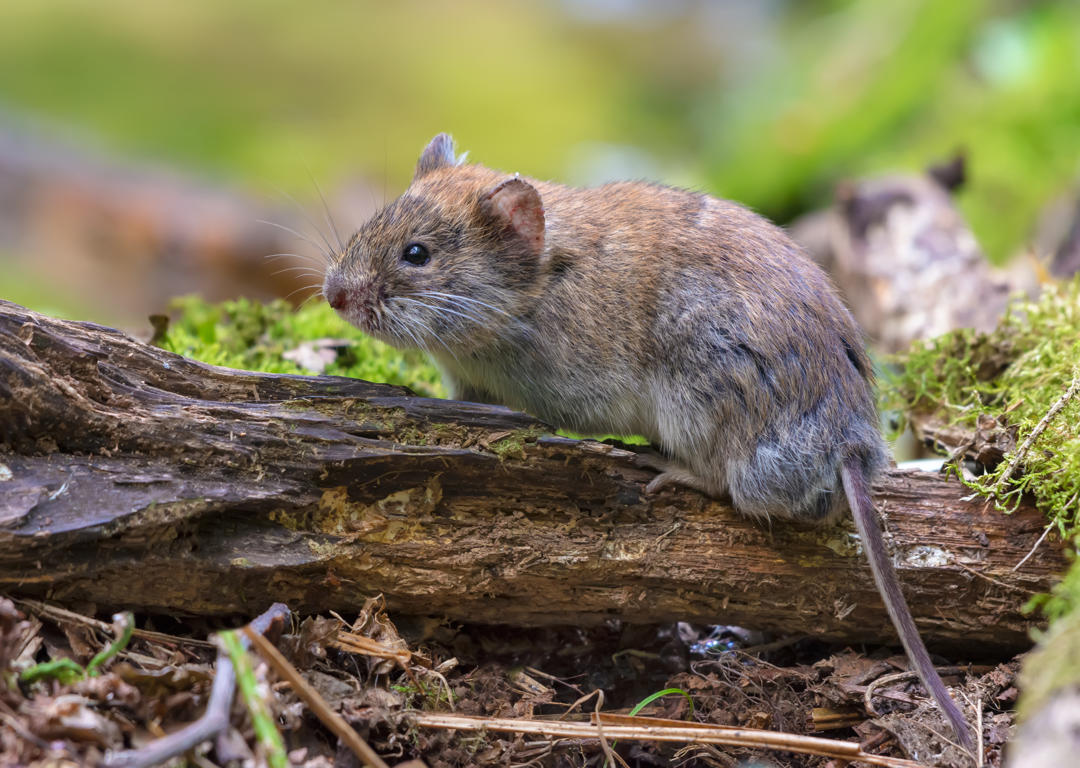

Voles, often mistaken for mice or moles, are small rodents that can cause significant damage to gardens, lawns, and landscapes. Understanding vole behavior is crucial for effective pest management and control. This article provides a detailed look at vole behavior and offers strategies to manage and control vole infestations.
Voles are small, burrowing rodents with short tails, compact bodies, and small eyes and ears. They differ from mice and moles in several ways. Voles are more robust and have a stout appearance compared to mice. Unlike moles, which primarily feed on insects, voles are herbivores that feed on a variety of plants.
Voles are adaptable and can thrive in various environments, including grasslands, forests, and agricultural fields. They prefer areas with ample ground cover, such as tall grasses, weeds, and mulch, which provide protection from predators. Voles create extensive tunnel systems just below the surface of the ground, which they use for shelter, food storage, and travel.
Voles are primarily herbivores and have a diet that includes grasses, roots, bulbs, tubers, and the bark of trees and shrubs. In winter, when green vegetation is scarce, voles often gnaw on tree bark, which can girdle and kill young trees. Their feeding habits can cause significant damage to gardens, lawns, and agricultural crops.
Voles have a high reproductive rate, with females capable of producing several litters per year. Each litter can contain between three to six young. The gestation period is about three weeks, and young voles reach sexual maturity in about a month. This rapid reproduction rate means that vole populations can increase quickly if not controlled.
Voles are active year-round and do not hibernate. They are mostly active during dawn and dusk but can be seen foraging during the day and night. Voles create runways through vegetation and burrow entrances, which are often visible in lawns and gardens. These runways and burrow systems are key indicators of vole activity.
Recognizing vole damage is essential for early intervention and effective control. Common signs of vole damage include surface runways in grass or ground cover and small burrow entrances about 1-2 inches in diameter. You might also notice bark gnawed off the base of trees and shrubs, particularly during winter, and damage to garden plants, flowers, and bulbs. Areas where voles have tunneled just below the surface, creating soft, uneven patches in lawns, are also indicative of their presence.
Effective vole control involves a combination of habitat modification, exclusion, trapping, and the use of repellents. Reducing favorable vole habitats can significantly decrease their population. Maintaining a well-manicured lawn and garden to eliminate hiding places and food sources is crucial. Regularly mowing the grass, trimming vegetation, and clearing away leaf litter, mulch, and other yard debris can help reduce vole habitats. Limiting the use of heavy mulch and ground covers near gardens and ornamental plants is also beneficial.
Exclusion methods can prevent voles from accessing specific areas of your property. Installing hardware cloth or wire mesh fencing around gardens and individual plants, burying the fencing at least six inches deep to prevent voles from burrowing underneath, and using tree guards or wrapping the base of young trees with hardware cloth to protect them from gnawing are effective measures.
Trapping is another effective method for reducing vole populations, especially in small areas. Snap traps placed along vole runways and near burrow entrances, baited with peanut butter, apples, or oatmeal, are effective. Live traps can capture voles for relocation, but this method is labor-intensive and less practical for large infestations.
Repellents can deter voles from damaging plants and entering specific areas. Applying commercial vole repellents containing active ingredients like capsaicin or predator urine around gardens and plants, using homemade repellents such as garlic, castor oil, or hot pepper spray, and planting vole-repellent plants like daffodils or garlic can help.
Integrated Pest Management (IPM) combines multiple control methods for long-term effectiveness. An IPM approach to vole control involves regular monitoring, prevention, control, and evaluation. Regularly inspecting your property for signs of vole activity and damage is essential. Implementing habitat modification and exclusion methods can prevent vole infestations, while trapping and repellents can reduce existing vole populations. Continuously evaluating the effectiveness of your control methods and adjusting your strategies as needed ensures long-term success.
For severe or persistent vole infestations, professional pest control services may be necessary. Pest control professionals can provide accurate identification of vole activity and damage, access to more effective and specialized control methods and products, and the development of customized vole management plans to address specific infestations and prevent future problems.
Understanding vole behavior and implementing effective control strategies are essential for managing vole infestations and protecting your property. By combining habitat modification, exclusion, trapping, and repellents, you can reduce vole populations and minimize damage. For severe infestations, professional pest control services can provide reliable and comprehensive solutions. Animal & Pest Control Specialists offer expert pest management services tailored to your needs, ensuring a vole-free environment.
Mice can contaminate food-preperation areas with their feces and can cause severe damage to structures.
Here are the signs you should be looking for to identify new pest problems this season.
We offer all the pest control services you need, including prevention, removal, and extermination.
It’s hard to understand the value we offer until you’ve tried us. Our discount makes it easier for new customers to get the best value in pest control.